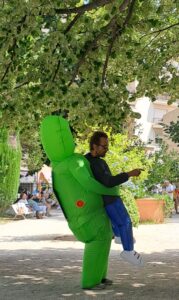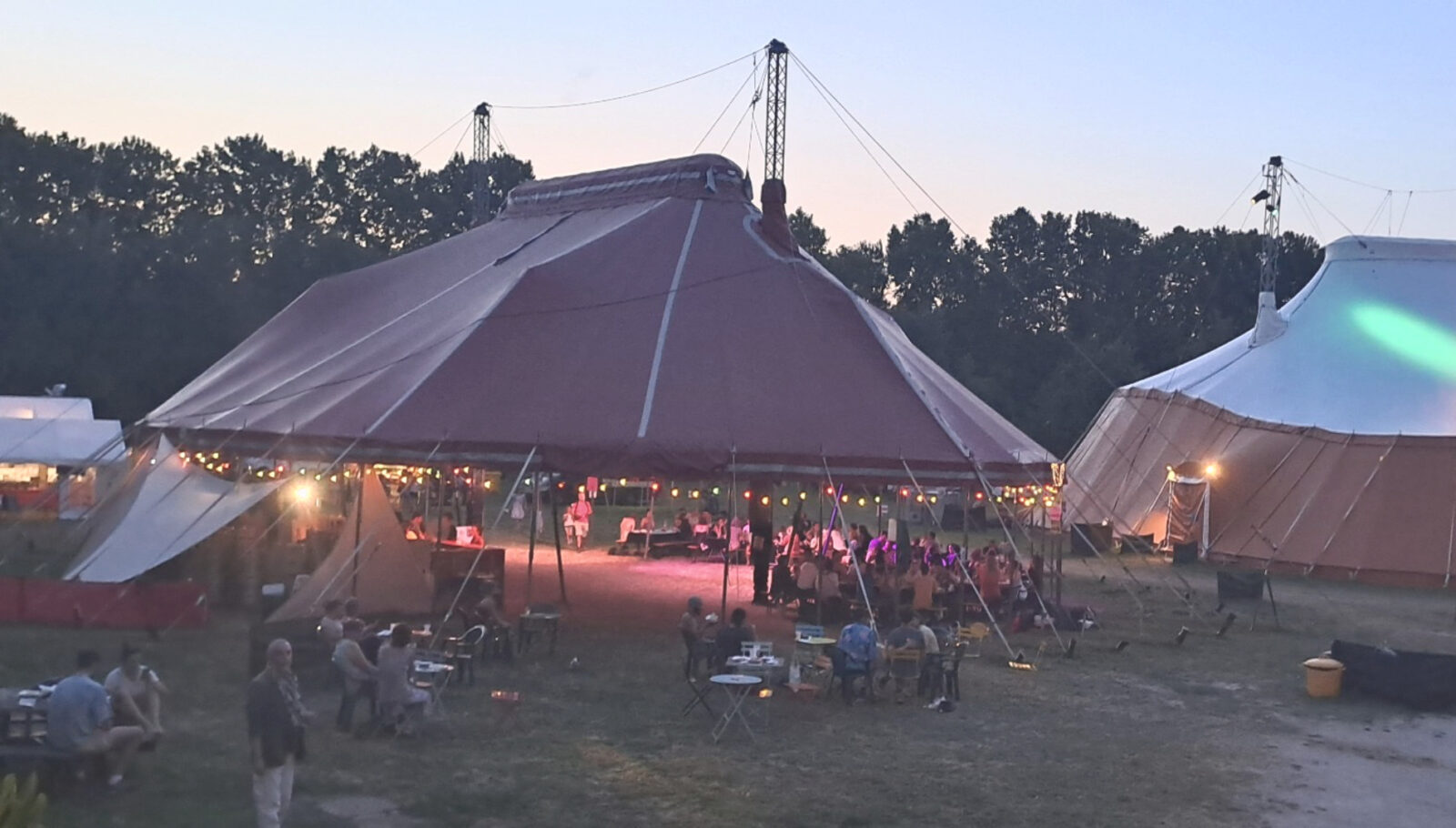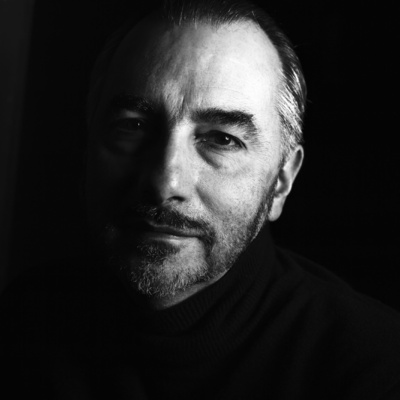“The World Will Be More Beautiful”: the 77th Festival d’Avignon
With rising temperatures and the global summer heat wave on everyone’s minds, the Avignon Festival took a new approach to its 77th edition: more sustainable staging and a pared-down program. But when it comes to theatre, “pared-down” means no less illustrious. Pascal Jacob tackles some of the circus offerings of Avignon 2023.
The ON and OFF festivals of Avignon follow one another and, fortunately, are not alike! This 77th edition was no exception to the rule and offered all its audiences as many emotions and discoveries as usual.

At the Festival d’Avignon, everything often begins with—or without—a poster. For IN Festival shows, the question is quickly resolved: there are none. Rather, it is the official Festival poster that serves as an announcement for the thirty or so invited troupes, and the public gets all the necessary information through online programming or by going to the Festival office in the magnificent Cloître Saint-Louis. On the other hand, for the almost 1600 companies in the OFF event, a poster is a guarantee of presence and visibility. This year, the municipality of Avignon imposed new standards for these advertising media that colonized the city for three weeks. All posters must be printed on recycled paper, with vegetable inks, and perforated so as to be hung via thread rather than glued to a wall.
The day before the Festival’s opening, ladders are placed against the strategic walls, and even if it is necessary for those delegated by the OFF show companies to carry out this work—which lasts a good part of the night—to wait until 22:00 before climbing up to hang their posters, these delegates are ready several hours before the long-awaited signal. This revolutionary new display system is an effective way for the city to avoid a tide of paper while keeping to a certain extent part of that Festival spirit.

This year about 50 companies ensure the presence of circus arts and magic in Avignon, and the diversity of offerings is very rich. Several places inside the walls of the Cité des Papes have programmed circus shows, sometimes with nice surprises. La Scala en Provence, a branch of the Parisian theater that regularly showcases contemporary circus, presents the Circus Baobab troupe, a company founded in 1998 at the instigation of the Guinean Ministry of Culture based on an original idea from filmmaker Laurent Chevallier, and with the active partnership of Archaos creator Pierrot Bidon. Their initial show was designed around an impressive scenographic structure, a gigantic baobab tree made of wood and steel from which the current company takes its name. The creation presented this year in Avignon, already seen in Paris at the Quai Branly Museum and the Scala-Paris, adds in a very sober staging element: countless crumpled plastic bottles, placed on the ground like an artificial stream, posing the critical issue of access to water for many communities in Africa. Built from an acrobatic repertoire very focused on portés and banquine, the show follows its sequences of play and action with real efficiency.
Away from the bustle of the city streets, beautiful gems are also to be found in unlikely places. Jérôme Thomas has chosen the charming garden of the Vouland Museum, one of the most secret addresses in Avignon for those who wish to cool off in the shade of ancient trees between two shows and three parades, to present Assis, a solo created from a poem by Arthur Rimbaud. The man is skilled, the juggler virtuoso: Jérôme invites us to a real performance, both poetic and juggled, always powerful and all the more moving.
Avignon attracts countless companies like a magnet, and the venues are almost as diverse as the shows they offer! The Condition des Soies (Condition of Silks) is perhaps one of the most amazing spaces, installed in a building designed in the early 19th century to carry out the drying of raw silk. It is also one of the two spaces that welcomes Taiwanese artists to the stage. The other is the Théâtre du Rouge-Gorge, a long barn that has been efficiently set up in the spirit of places where Molière’s troupe or those of his contemporaries would have performed, which hosts the Taiwanese acrobats. Starting from a very simple fable, these five acrobats unfold a series of very physical sequences that mix play, manipulations, and portés. It is both new and refreshing to discover young artists trained to master a range of traditional techniques and able to transcend them through a very simple narrative, which therefore radically changes our perception.

LaScierie is another atypical space, a third place focused on culture, ecology, social economy, and solidarity, with an organic store, a bar, and several theaters. Installed beyond the city walls, it is above all a place of life and exchanges where a number of companies perform during the Festival. This was the case for the Acrostiches, a troupe created in 1994 in Toulouse, and whose new creation, ExCentriques, features gyropodes or segways—a rather new apparatus, even if they have been used for a few years by Chinese acrobatic troupes. Beyond their technical virtuosity, one essential component of the company since its foundation has been its humor, and opportunities to laugh or smile are regular throughout the performance. A light and joyful show visibly designed to live on a formal theatre stage, ExCentriques would also probably and advantageously find its bearings in a circular space.
For the first time since the Occitanie fait son cirque en Avignon operation was founded 17 years ago, no more shows were presented on the Ile Piot site between 12:30 and 18:00. It is the collateral damage of global warming: the temperature inside the tents is impossible to maintain with the intense afternoon heat, and the environmental impact of air conditioning systems is such that the Occitanie team preferred to make the choice to drastically reduce the number of shows. So there is only one big top mounted on the site, and some companies perform in a gymnasium and a conference room converted into show spaces and refreshed by a cold air blower. This 2023 edition was therefore built from tighter programming, developed around seven shows and three professional meetings presented between July 8 and 16.
The political dimension that infuses, illuminates, or transcends the different creations, already widely noticeable last year, is still as vivid in 2023. Baal, an acrobatics and dance piece created by the Noces-Florence Bernad Group, strongly calls for the deconstruction of the patriarchy. The body is a powerful medium to explore and comprehend the dimensions of a world where man shares little and where woman suffers much more often than she imposes. Two groups challenge each other on stage—men dance, women sing—to say how much the equity and balance of our societies are both fragile and contradictory.
The End Is Nigh! is an unambiguous title: the company La Barque Acide has shaped a show with apocalyptic accents, somewhere between observation and metaphor for an almost dead future and a disjointed present. Broken glass is trampled without apparent pain, and swallowed swords, sensually undressed contortion, a funambulist trolley, and the masterful manipulation of leaping toasts compose a succession of sequences where humor flirts with fatalism, where laughter never ceases to face the anguish of days that clash with more than follow each other… The energy of this troupe is beautiful: the purposeful creaking and integration of circus disciplines throughout the show appear very intelligent from beginning to end. As such, and with a lot of humor, the handling of the bread slices that spring from the toasters is a moment you will never forget!

The Solo, designed by Lucie Yerlès and Gaspar Schelck, is a salutary and exciting show that explores with science and causticity the dark side of the spectator. Why does the public love to see an artist take risks? Based on this question, the creative duo has designed a new, very structured and documented form somewhere between scientific popularization and aerial performance, which questions the notion of entertainment and upsets some of our most deeply rooted certainties…
My name is Hor, a creation by the Catalan company Psirc both rich in meaning and with strong images, is the ideal expression of a collective work, thought up and built by the three designers who carry it out on stage. Rolando San Martin, Wanja Kahlert, and Adrià Montaña—respectively the show’s director and the two acrobats and puppeteers—have woven a whimsical fable that offers them a new playground to explore human relationships. Their work with sober wooden puppets is both touching and fascinating, flirting with humor and with manipulation and object theater. Playing upon their physical disparity, the two acrobats suggest a balance of power that is similar to hand-to-hand. But their palette is much wider, and they know how to give shape and soul to a repertoire of very dense forms.
In Umwelt, by and with Morgan Cosquer, the viewer is confronted with a strange character, a “Homo Jonglisticus” who outlines a new evolution of juggling with the confessed aim of creating an unusual and improbable lineage of juggling mammals. Morgan is as skillful with his words as with his body, and the stunned audience attends a juggling demonstration as virtuoso as it is stunning. The temptation to describe this almost new discipline is strong, but the temptation to keep the mystery and surprise for those who will have the chance to see the show is even greater! So you will have to discover it for yourself!
Even if tightened, the programming on Piot Island continues to enhance commitment and offer a new perception of human relationships to complement this conclusion from the show Baal: “(…) It will be a fairer world, where the space of love, the games of seduction, will only be more beautiful.”
Cover image taken by Pascal Jacob....
Do you have a story to share? Submit your news story, article or press release.





